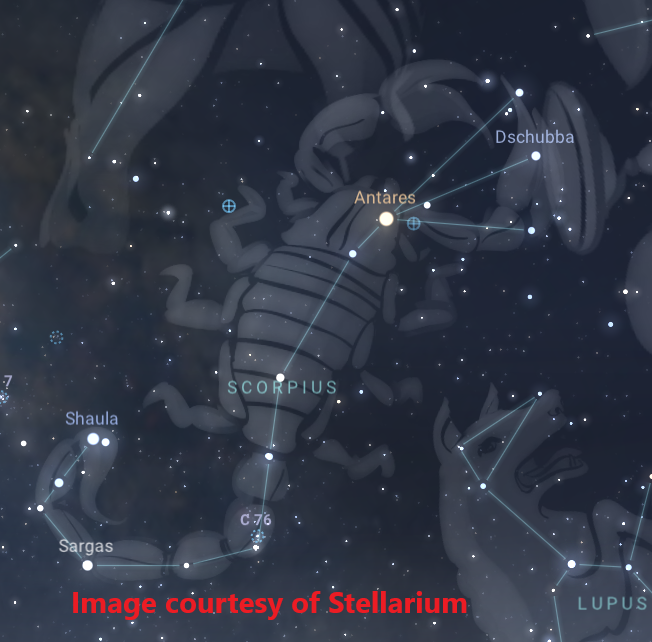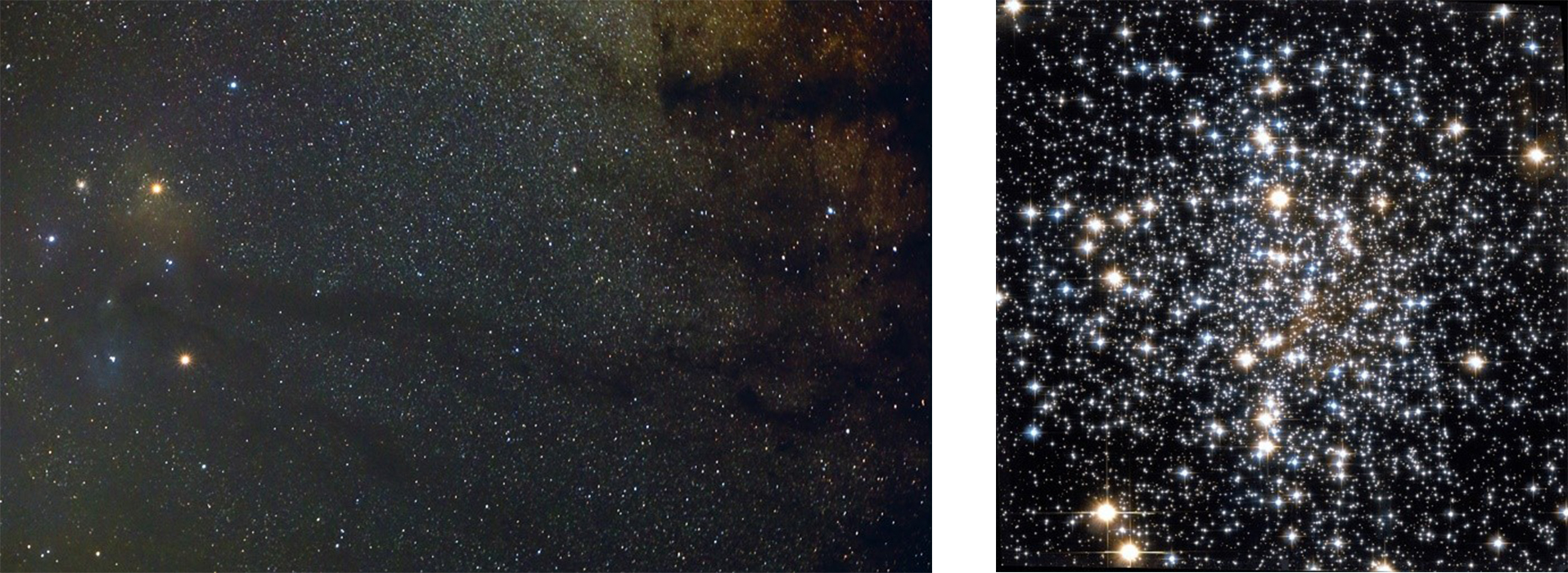
SUMMER STING-ALONG
July is generally the hottest month of the year in the Northern Hemisphere. The reason for this is not because we are closer to the Sun than usual, as some people believe. In fact, Earth reaches its aphelion, or farthest point from the Sun, on July 5th, when it will be about 3.5% more distant from our star than it was back in January. The actual reason is that for the northern hemisphere, Earth’s axis is tipped more towards the Sun during at this time of year. The tip is greatest at the time of the summer solstice, around June 20th, but July is usually slightly hotter than June due to residual cooling from the previous winter. Conversely, January is usually colder than December, the month of the winter solstice, due to the leftover heat from summer.
One of my favorite activities at this time of year is to present some of the narration on the Gateway Arch riverboats. These boats are operated by our partners at Bi-State, who also run the Arch tram system. However, when going outside to head for the boat after being inside the air-conditioned Visitor Center all morning, it can almost feel like I am getting stung by the heat. Many of you have probably felt that way. There are also many bees and wasps around at this time of year. Thus it is appropriate that a constellation representing a stinging creature, Scorpius, be featured in the sky at this time of year. In spite of being named after a rather nasty arachnid, Scorpius is actually one of the most distinctive and beautiful constellations in our night skies.
As seen from the northern hemisphere, Earth’s axis is tipped somewhat away from Scorpius, so it appears rather low in the southern sky when seen at its best. Seeing the entire constellation requires an open view all the way down to the south. On July evenings, soon after dark, the reddish orange star Antares is easily found even in light polluted areas. Translated from ancient Greek, the name Antares translates to “rival of Ares”, the God of War- Mars in Roman mythology. During its orbit around the sun, every couple of years Mars passes Antares in the sky. Depending upon how close Mars is to Earth at the time, the two can look very similar. Antares is farther away than most stars visible to the naked eye at a distance of about 550 light years. This means that the light that you see left it about 40 years before telescopes were invented! To rank as one of the “first magnitude” stars at such a distance, Antares must be very large, and in fact it is a red supergiant star, likely in the very distant future to explode as a supernova. The Maori people of New Zealand call Antares Rehua, chief of all the stars.

Left: Antares (upper orange star) and Mars shine almost equally bright in this Sky & Telescope image.Right: Messier 4, using the Hubble Space telescope. Globular clusters are “balls of older stars” that form a halo around the centers of galaxies. Courtesy NASA.
Three stars in a somewhat ragged line mark the scorpion’s claws. The middle star of the three, known as Delta Scorpii, suddenly brightened a few years back and now is distinctly brighter than the other two. Just to the right of Antares is a globular star cluster known as Messier 4 that can be seen in binoculars as a small fuzzy and dim fuzzy spot. However as is often the case in stargazing, appearances are deceiving, as M-4 looks small and dim only because of its tremendous distance of 7,200 light years from Earth. It is thought to contain as many as 100,000 stars.
The scorpion’s body and tail form a graceful fishhook shape, but we are just a little too far north here in St. Louis to see the lower stars well- try a very clear, dark night, and/or bring binoculars. However, the close pair of stars marking the stinger are brighter and quite distinctive and brighter and have acquired the nickname of the “Cat’s Eyes.”
In mythology, Scorpius was the doom of the famous hunter, Orion. Orion boasted of his prowess, stating that he could kill every animal on Earth. He was overheard by Artemis, goddess of the hunt, who turned the tables and sent the scorpion to kill Orion instead. Zeus, king of the gods, placed both scorpion and hunter in the sky, but at opposite ends in order to prevent further trouble in the heavens. To this day, Orion and Scorpius are never visible at the same time, from mid northern latitudes, with Orion dominating the skies of freezing winter evenings and Scorpius those of blazing hot summer nights.
Looking ahead to August, there will be a great opportunity to view one of the best meteor showers- mark your calendar for the Perseids on the morning of August 12. We’ll discuss a lot more about it in next month’s edition of this blog.
Join us for our next Gateway to the Stars program at 8 pm on July 17. Night Sky Ambassador and Space Art Travel Bureau director Dr. Tyler Nordgren will speak on “Astronomy in the National Parks,” a look at some of the stargazing opportunities available for those who travel to these great locations. Dr. Nordgren has created many vintage-style posters of NPS sites. His program will be followed by our Sky Ranger’s tour of the July night skies and then Virtual Stargazing at the Gateway Arch. Go to www.facebook.com/stlastro in order to view this program.
One of my favorite activities at this time of year is to present some of the narration on the Gateway Arch riverboats. These boats are operated by our partners at Bi-State, who also run the Arch tram system. However, when going outside to head for the boat after being inside the air-conditioned Visitor Center all morning, it can almost feel like I am getting stung by the heat. Many of you have probably felt that way. There are also many bees and wasps around at this time of year. Thus it is appropriate that a constellation representing a stinging creature, Scorpius, be featured in the sky at this time of year. In spite of being named after a rather nasty arachnid, Scorpius is actually one of the most distinctive and beautiful constellations in our night skies.
As seen from the northern hemisphere, Earth’s axis is tipped somewhat away from Scorpius, so it appears rather low in the southern sky when seen at its best. Seeing the entire constellation requires an open view all the way down to the south. On July evenings, soon after dark, the reddish orange star Antares is easily found even in light polluted areas. Translated from ancient Greek, the name Antares translates to “rival of Ares”, the God of War- Mars in Roman mythology. During its orbit around the sun, every couple of years Mars passes Antares in the sky. Depending upon how close Mars is to Earth at the time, the two can look very similar. Antares is farther away than most stars visible to the naked eye at a distance of about 550 light years. This means that the light that you see left it about 40 years before telescopes were invented! To rank as one of the “first magnitude” stars at such a distance, Antares must be very large, and in fact it is a red supergiant star, likely in the very distant future to explode as a supernova. The Maori people of New Zealand call Antares Rehua, chief of all the stars.

Left: Antares (upper orange star) and Mars shine almost equally bright in this Sky & Telescope image.Right: Messier 4, using the Hubble Space telescope. Globular clusters are “balls of older stars” that form a halo around the centers of galaxies. Courtesy NASA.
Three stars in a somewhat ragged line mark the scorpion’s claws. The middle star of the three, known as Delta Scorpii, suddenly brightened a few years back and now is distinctly brighter than the other two. Just to the right of Antares is a globular star cluster known as Messier 4 that can be seen in binoculars as a small fuzzy and dim fuzzy spot. However as is often the case in stargazing, appearances are deceiving, as M-4 looks small and dim only because of its tremendous distance of 7,200 light years from Earth. It is thought to contain as many as 100,000 stars.
The scorpion’s body and tail form a graceful fishhook shape, but we are just a little too far north here in St. Louis to see the lower stars well- try a very clear, dark night, and/or bring binoculars. However, the close pair of stars marking the stinger are brighter and quite distinctive and brighter and have acquired the nickname of the “Cat’s Eyes.”
In mythology, Scorpius was the doom of the famous hunter, Orion. Orion boasted of his prowess, stating that he could kill every animal on Earth. He was overheard by Artemis, goddess of the hunt, who turned the tables and sent the scorpion to kill Orion instead. Zeus, king of the gods, placed both scorpion and hunter in the sky, but at opposite ends in order to prevent further trouble in the heavens. To this day, Orion and Scorpius are never visible at the same time, from mid northern latitudes, with Orion dominating the skies of freezing winter evenings and Scorpius those of blazing hot summer nights.
Looking ahead to August, there will be a great opportunity to view one of the best meteor showers- mark your calendar for the Perseids on the morning of August 12. We’ll discuss a lot more about it in next month’s edition of this blog.
Join us for our next Gateway to the Stars program at 8 pm on July 17. Night Sky Ambassador and Space Art Travel Bureau director Dr. Tyler Nordgren will speak on “Astronomy in the National Parks,” a look at some of the stargazing opportunities available for those who travel to these great locations. Dr. Nordgren has created many vintage-style posters of NPS sites. His program will be followed by our Sky Ranger’s tour of the July night skies and then Virtual Stargazing at the Gateway Arch. Go to www.facebook.com/stlastro in order to view this program.
